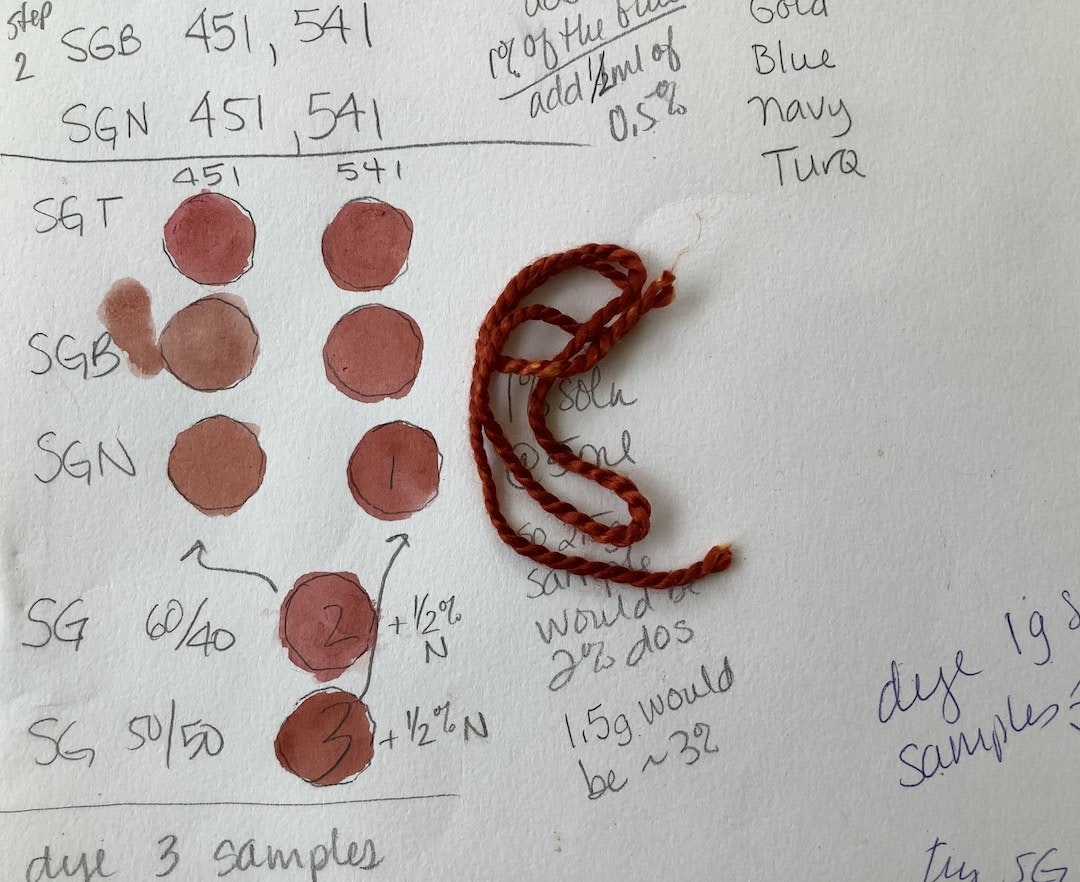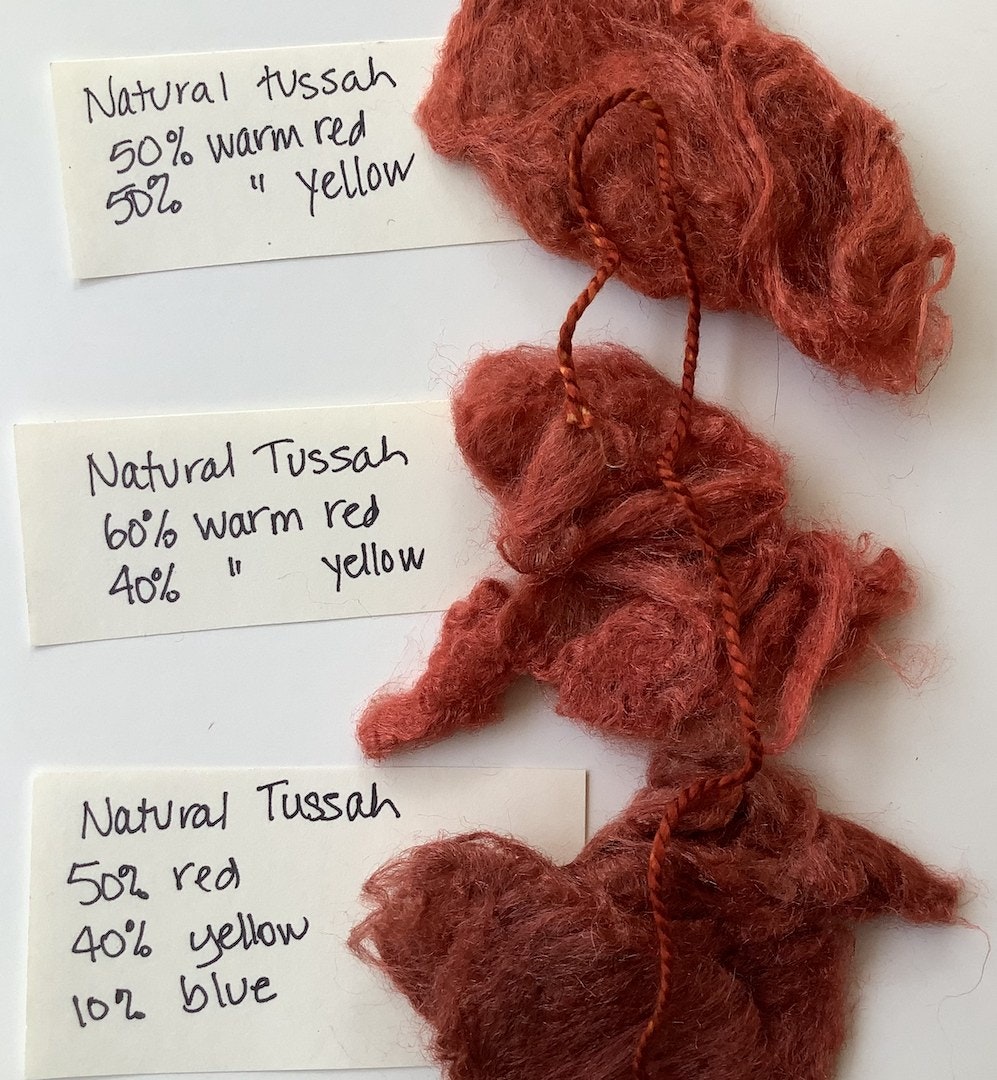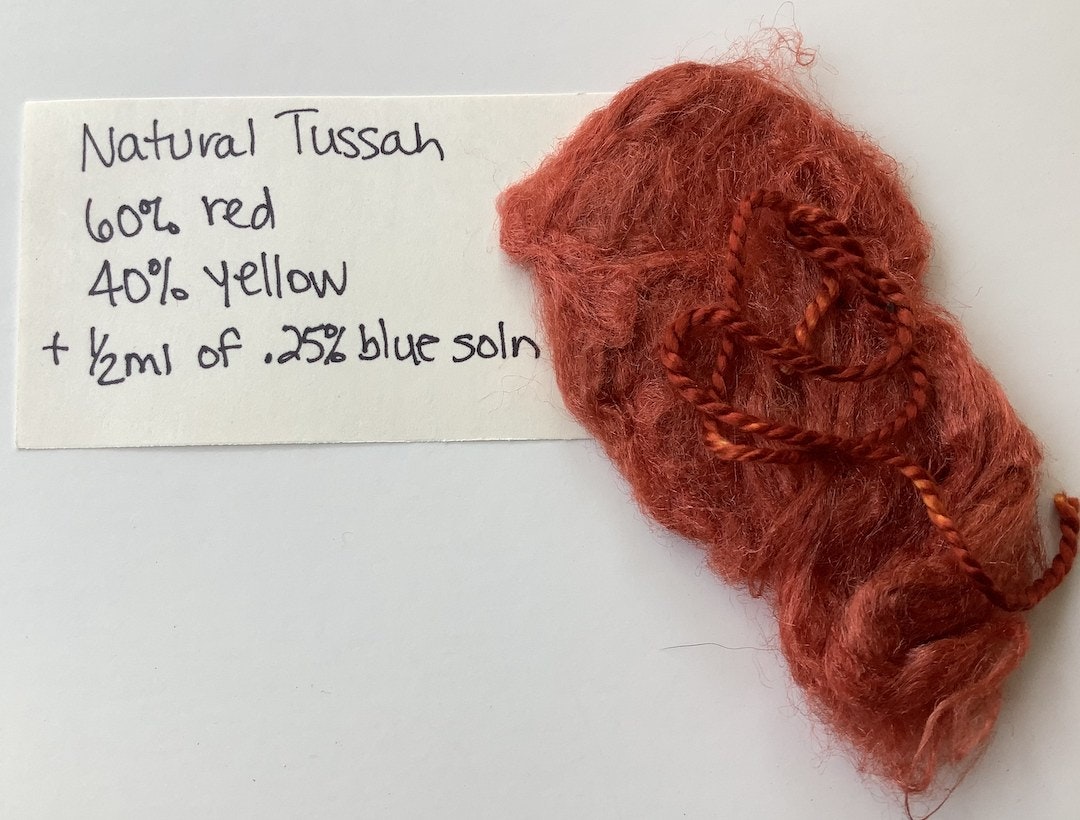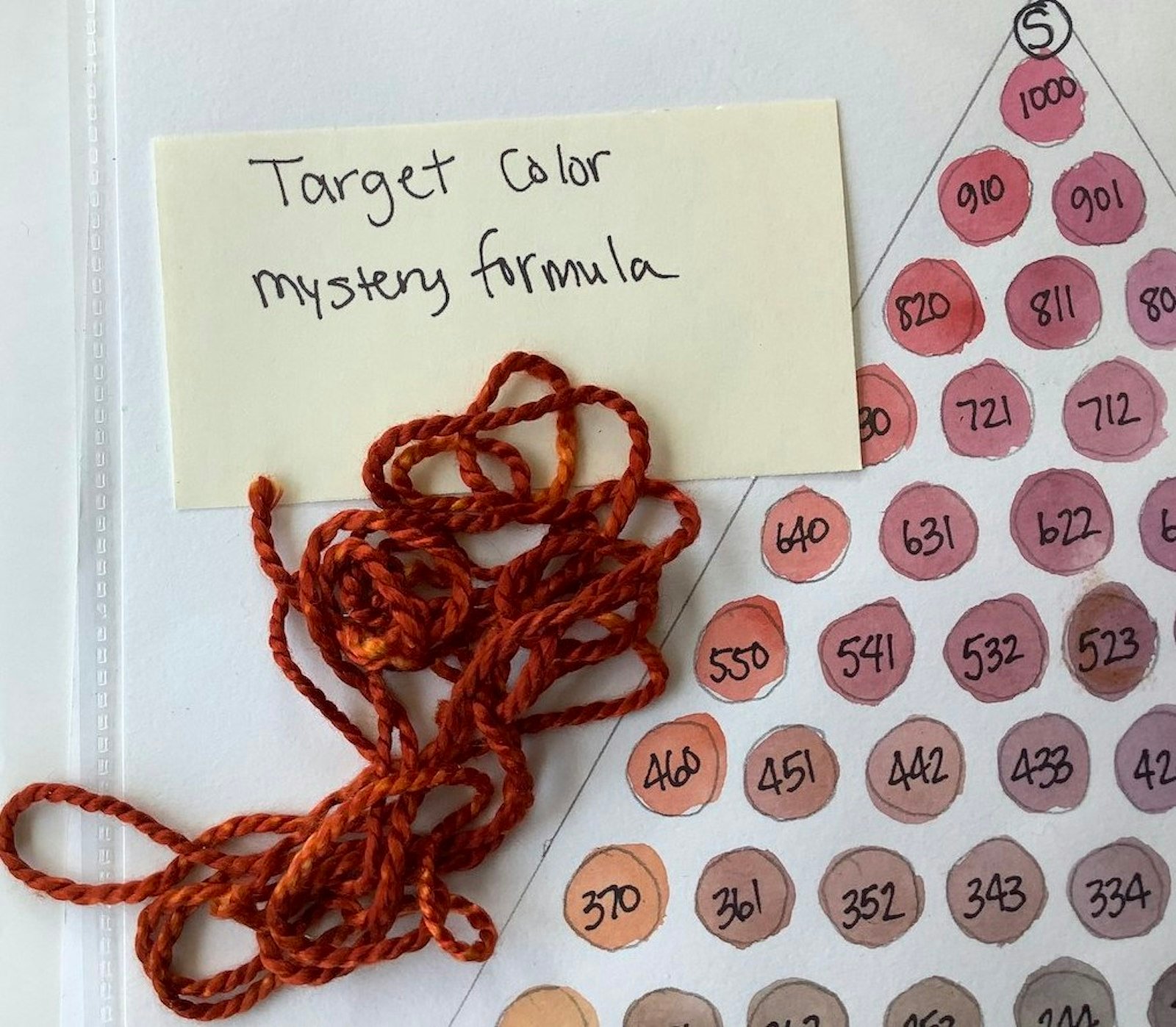Have you ever found a yarn or a garment where the color just grabbed your attention, and you thought, “Oh, I wish I had a dye formula for this color!”? Or perhaps a ruthless, enabling dyer friend tempted you with their latest dyepot masterpiece? “Here, look at this color! You’ll want this.”
This exact thing happened to me last summer, and I do love a good challenge. So, I asked my enabling friend to send me a small sample of her masterpiece yarn so that I could replicate the color. We use the same brand of dyes and the same palette within, and I expected her to share her formula with me. (We’re friends, remember?)
Dump Dyeing
It was at this point in the conversation that my friend shared with me that she may have done a little “dump dyeing.” In our circle, dump dyeing is not a flattering term, nor is “dump dyer.” Those terms imply a lack of a color formula, adding of dyes willy-nilly with sheer-luck results. And for some folks, this does not matter; they are happy, and surprised, at what they achieve. Yet, if you want to re-create your colors or figure out the mystery to achieving that one color you love, dump dyeing is not going to be a helpful technique. But most dyers do it to use up leftover dyes, so an understanding of how to match a dump-dyed color can be very useful.

Painting dye samples on watercolor paper helped Terry visualize the three primary blue formulas against the sample yarn.
Matching the Formula
Once you’ve been dyeing fiber and yarn for a few years, you may learn what to expect from your dyes—which ones require a lighter hand and which require greater quantities. But have you really learned how they interact? Or what undertones they contain?
After receiving my friend’s small yarn sample, I carefully examined it outside under natural light. She was correct; it was a fabulous, coppery orange¬—a color I adore. I know that we both use a color-dye recipe system that limits a color match to usually using three primary colors.
I consulted my dye notebook, which contains both dyed yarn samples and painted-dye triangle charts. This gorgeous coppery orange is a warm color, so I started with the warm red and the warm yellow. My dye notebook samples told me that I would need a hint of blue to lean from pure bright orange to a coppery color. But which blue to use? My chart directed me to try the alternate cool blue.

Dyed silk fiber samples against Terry’s target yarn color.
For the first couple of attempts, I painted the dye on watercolor paper rather than dye silk fiber. I use this method to get close, and when I feel I am in the ballpark, I begin to dye the fiber. I started with a blend of 50% warm red, 40% warm yellow, and 10% cool blue. The result was far too dull, and it had too much blue.
The next combination was the same amount of red and yellow, but I decreased the amount of blue by half. Ah! Much closer but still too dull.
I was finally successful after reducing the blue by half two more times. I kept notes as I worked and ended up with the final recipe.

Terry’s final results and recipe.
Give this a try, and you, too, can learn to do this. Stock a palette of primary dyestuffs and create a range of colors from them. With a basic ratio system, you can create as many samples, both painted and dyed, as you like, building your own dye-recipe notebook.
Terry Mattison learned color theory and all about undertones the hard way: through a career in the paper industry. Terry matched color on a fast-running paper machine; it was trial by fire! Now she enjoys matching color and dyeing at a more sedate pace using both synthetic and natural dyes. Find her on Ravelry and Instagram as magpiedyestudio.
Read more about repeatable dyeing from Terry in the Spring 2021 issue of Spin Off.

